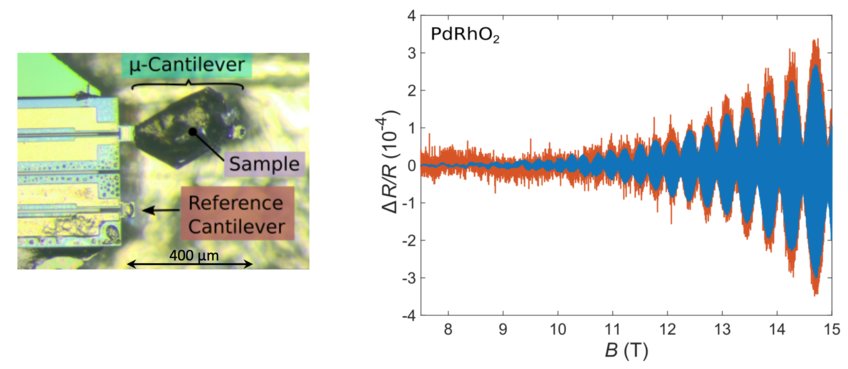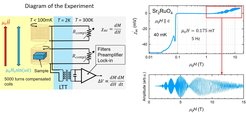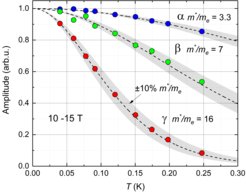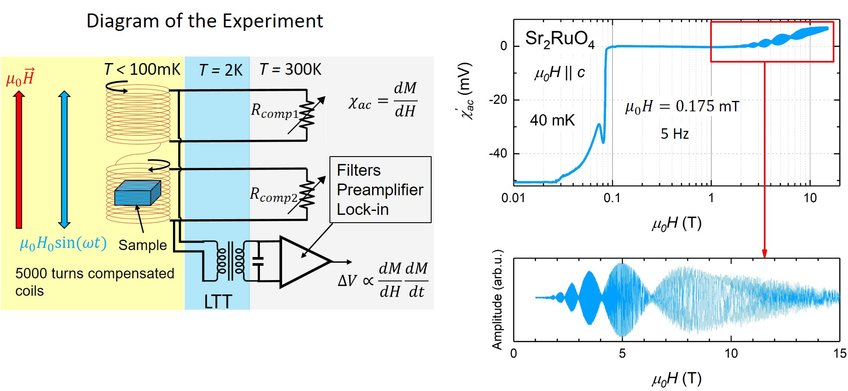
SQUID amplified torque magnetometry
In high carrier density correlated electron systems, quantum oscillations are usually detected as tiny oscillations of the magnetization of a sample that appear below 1K. This requires extremely precise and low noise measurement techniques. We have developed a magnetometer based on piezoresistive cantilevers for submilimeter-sized samples with a resolution that is 10-20 times better than previous techniques at 700 mK and in strong magnetic fields. The working principle is based on the use of a SQUID as a low temperature amplifier, which we were able to run in fields up to 15T.
In the figure on the left one can see the tiny delafossite sample fixed on a piezoresistive microcantilever. The figure on the right shows the quantum oscillations in the magnetic torque of a delafossite metal using the SQUID amplifier (blue) compared to standard piezoresistive techniques (red). The noise level is clearly reduced.
AC susceptibility and modulation technique

The magnetic ac-susceptibility (χac) or differential susceptibility is the physical response of the change of magnetization under the influence of a small alternating magnetic field. The field modulation techniques, where oscillations in the higher order harmonics of the susceptibility are detected, is one of the most sensitive techniques to detect de Haas-van Alphen quantum oscillations and it is suitable to be used also under hydrostatic pressure.

We developed an ac-susceptometer made of a pair of compensated pick-up coils of length 1.5 mm and with 5000 turns of 17 µm thick copper wire each. The inner and outer diameter of the coils is 1 mm and 3.7 mm, respectively. The ac magnetic field is produced using a superconducting modulation coil. The output signal of the pick-up coils is amplified in three steps: first by a low temperature transformer, then by a low noise amplifier and finally by a lock-in amplifier, with a resulting noise level of 70 pV/(Hz)1/2. The experimental setup is installed in MX400 Oxford dilution refrigerator where we can reach temperatures down to 35 mK on the sample and apply a DC magnetic field of up to 17 T. The sample temperature was verified by analysing the temperature dependence of quantum oscillations in Sr2RuO4 and comparing it to previous results where the effective mass was determined precisely.

